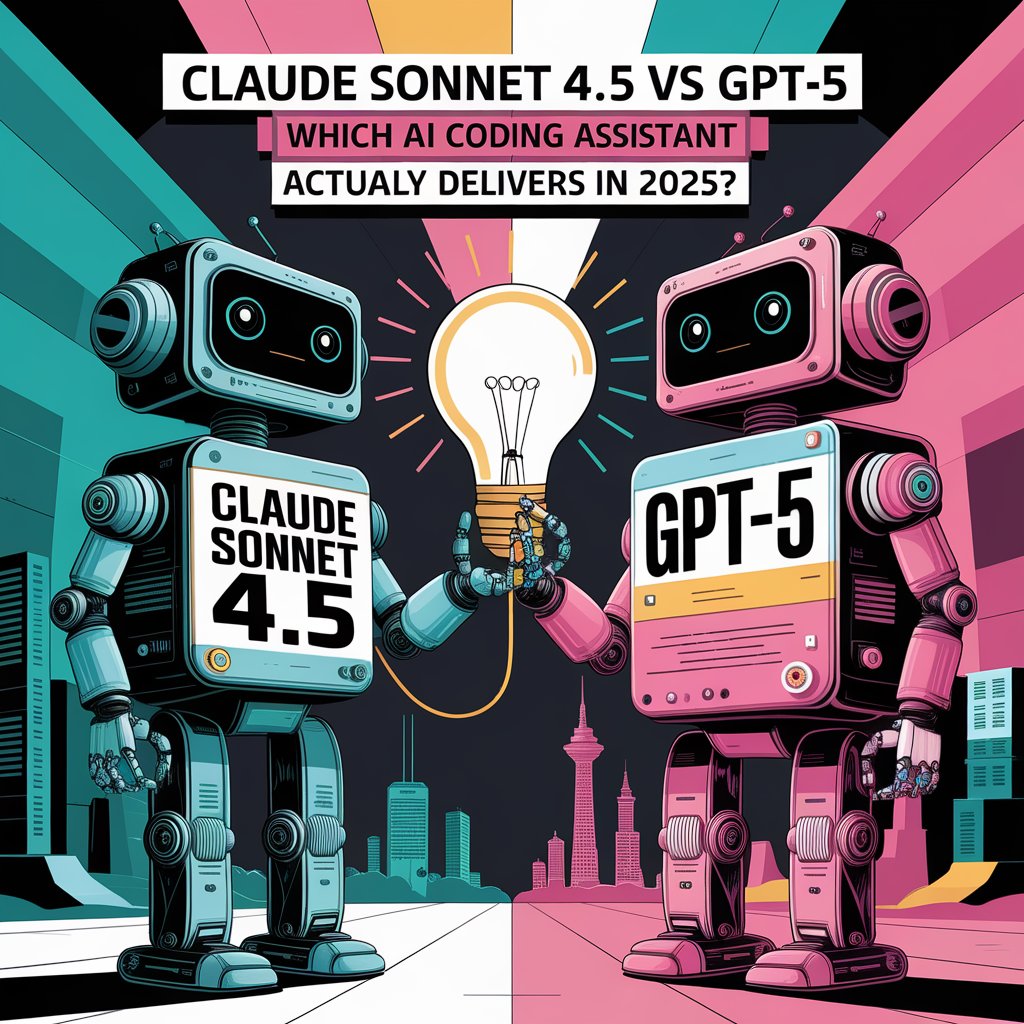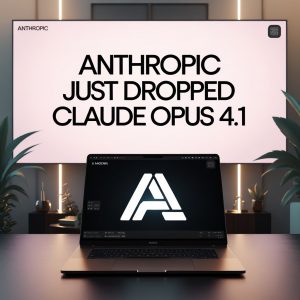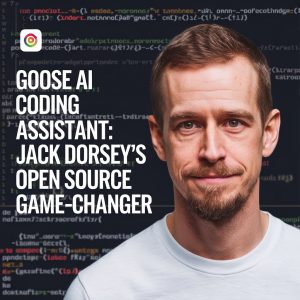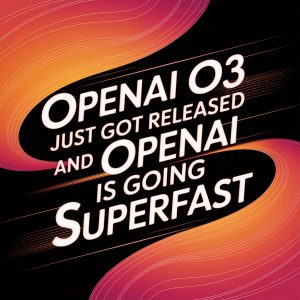Look, I’ll be straight with you. If you’re a developer in 2025 and you’re not using AI to code, you’re basically showing up to a Formula 1 race on a bicycle. But here’s the thing—with Claude Sonnet 4.5 and GPT-5 both claiming the crown as “the world’s best coding model,” which one should you actually trust with your code?
I’ve spent the last few weeks putting both through their paces, and honestly? The answer isn’t as simple as picking Team Claude or Team OpenAI. It’s more like choosing between a precision scalpel and a Swiss Army knife—both are brilliant, but for different reasons.
The Real Story Behind These Models
Before we dive into the nitty-gritty, let’s talk about what actually happened in 2025. OpenAI dropped GPT-5 like a bombshell on August 7th, claiming it was their most advanced reasoning model yet. Then Anthropic responded with Claude Sonnet 4.5 on September 29th, basically saying “hold my beer” and announcing they’d built the best coding model in the world.
Classic tech rivalry, right?
But here’s what’s actually interesting: both companies are telling the truth. They’ve just optimized for completely different things.
Speed vs. Thoroughness: The Core Difference
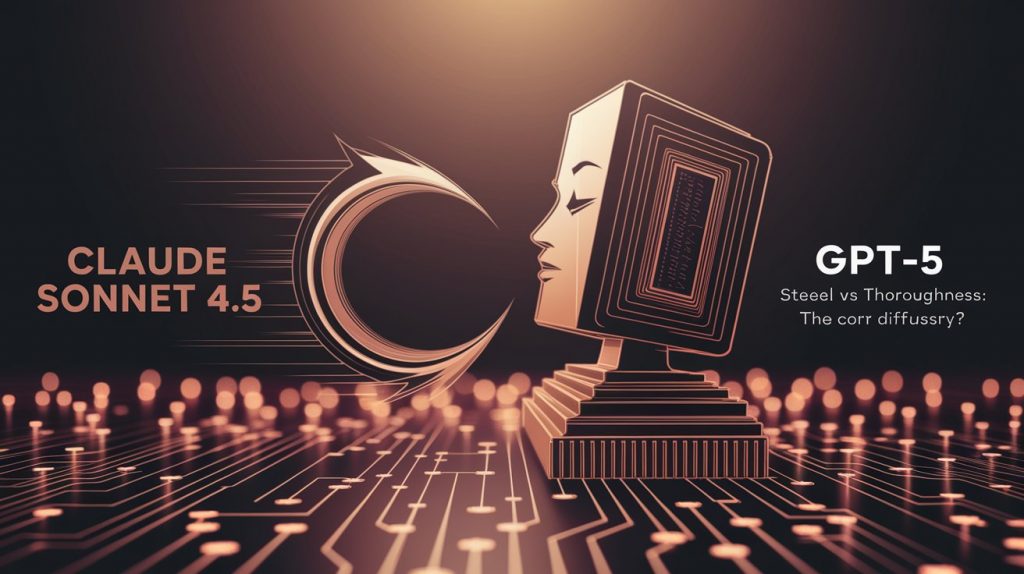
Let me paint you a picture. You’re debugging a gnarly issue at 2 AM (we’ve all been there). You fire up Claude Sonnet 4.5 and boom—it’s done in 2 minutes flat. Clean, fast, surgical fix.
Now, same scenario with GPT-5 Codex? It takes about 10 minutes. But here’s the kicker: it’s not just fixing your bug. It’s adding error handling, edge case coverage, writing tests, and basically over-delivering like that one friend who brings a three-course meal to a potluck.
Claude Sonnet 4.5 is the sprinter. It completes code reviews five times faster than GPT-5 in real-world testing. When you need rapid iteration and you need it now, Claude is your go-to.
GPT-5 is the marathon runner. It thinks deeper, plans better, and catches subtle edge cases that Claude sometimes misses. If you’re refactoring a massive codebase or need rock-solid production code, GPT-5’s thoroughness pays off.
The Benchmark Battle: Let’s Talk Numbers
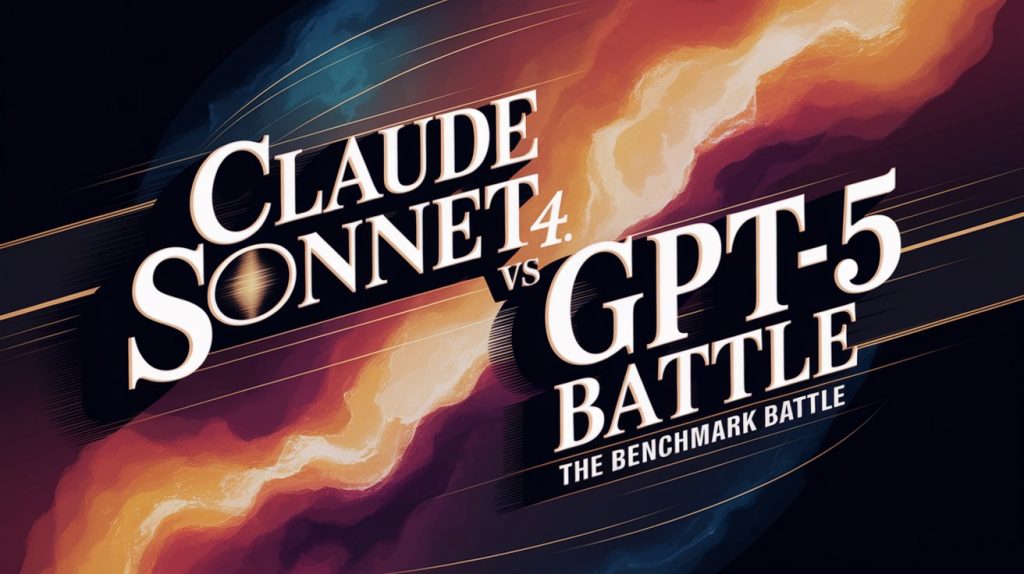
Okay, everyone loves talking about benchmarks, so let’s get into it. But first, a reality check: benchmarks are like those perfectly styled Instagram photos—they tell part of the story, but not the whole story.
SWE-bench Verified (The Real Deal)
This benchmark tests whether AI can solve actual GitHub issues from real projects. We’re talking about the messy, complex stuff developers deal with every day.
- Claude Sonnet 4.5: 77.2% (jumps to 82% with parallel computing)
- GPT-5: 72.8%
- GPT-5 Codex: 74.5%
Claude wins here, no question. But hold up—independent testing by Vals.ai showed Claude at 69.8% and GPT-5 Codex at 69.4%. Basically a tie when tested in the real world. Interesting, right?
OSWorld (Computer Use Tasks)
This measures how well AI can actually use a computer—navigating websites, filling spreadsheets, that kind of thing.
- Claude Sonnet 4.5: 61.4% (massive jump from Claude 4’s 42.2%)
- GPT-5: Lower scores (exact numbers vary by test)
Claude dominates here. If you’re building autonomous agents that need to interact with actual software, Claude is currently unmatched.
AIME 2025 (Math Reasoning)
High school math competition problems that make most humans cry.
- GPT-5: 94.6% (without tools)
- Claude Sonnet 4.5: 100% (when using Python)
Interesting split. GPT-5 does it through pure reasoning. Claude needs Python but achieves perfection. Pick your poison.
Terminal-Bench (Command Line Mastery)
- Claude Sonnet 4.5: 50%
- GPT-5: 43.8%
For developers who live in the terminal (you know who you are), Claude feels more natural.
The Elephant in the Room: Pricing
Let’s talk money because, yeah, it matters.
GPT-5 Pricing:
- Input: $1.25 per million tokens
- Output: $10 per million tokens
Claude Sonnet 4.5 Pricing:
- Input: $3 per million tokens
- Output: $15 per million tokens
GPT-5 is 2.4x cheaper for input and 1.5x cheaper for output. If you’re running high-volume operations, that difference adds up fast.
But—and this is crucial—cost per token doesn’t equal cost per task. One developer told me Claude finished a fuzzy-search feature faster but needed more hand-holding. GPT-5 took longer but delivered a more complete solution with fewer iterations.
Real talk? If Claude solves your problem in one shot and GPT-5 needs three attempts to get it right, Claude might actually be cheaper despite the higher token prices.
Where Each Model Actually Shines
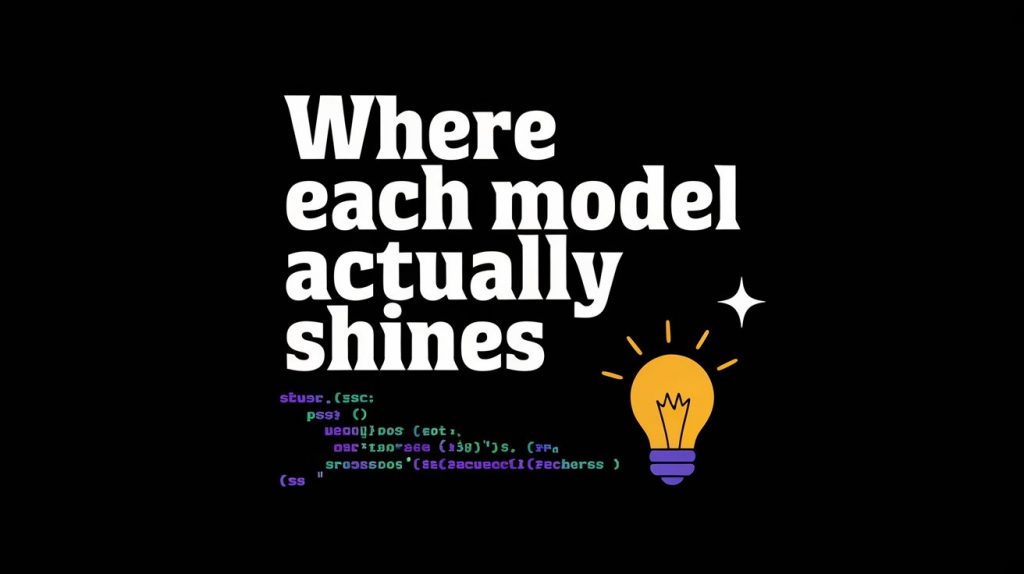
After testing both extensively, here’s what I’ve learned:
Choose Claude Sonnet 4.5 When:
You need speed and iteration. When you’re in that flow state and just need quick, accurate responses, Claude keeps the momentum going.
You’re building autonomous agents. The extended thinking mode lets Claude maintain focus for 30+ hours on complex tasks. That’s insane. GPT-5 maxes out around 7 hours.
You’re working in the terminal. Claude Code’s integration with VS Code and JetBrains is chef’s kiss. It just feels right.
You value UI/UX polish. Developers consistently note Claude produces more visually refined interfaces out of the box.
Safety is non-negotiable. Anthropic went hard on safety features—reduced prompt injection vulnerabilities, better alignment, less hallucination.
Choose GPT-5 When:
You need that deep architectural thinking. GPT-5’s thinking mode tackles complex architectural decisions better. It’s like having a senior architect reviewing your work.
Production stability is everything. GPT-5 catches edge cases that Claude occasionally misses. For critical production code, that thoroughness matters.
Cost is a major factor. Those token savings are real, especially at scale.
You want broader ecosystem integration. GPT-5 has more mature tooling and integrations across the Microsoft/OpenAI ecosystem.
You’re doing heavy mathematical reasoning. That 94.6% on AIME without tools? That’s not luck.
Real Developer Experiences (The Unfiltered Truth)
I reached out to developers who’ve used both. Here’s what they’re actually saying:
From Michele Catasta at Replit: “Claude Sonnet 4.5’s edit capabilities are exceptional. We went from 9% error rate on Sonnet 4 to 0% on our internal code editing benchmark.”
From Simon Willison (independent developer): “My initial impressions were that it felt like a better model for code than GPT-5-Codex, which has been my preferred coding model since it launched.”
From a developer who tested both on a production feature: “Sonnet 4.5 finished faster but was brittle. GPT-5 Codex took longer yet added error handling, edge cases, and tests—ultimately the clear winner.”
See the pattern? It’s not about “better” or “worse”—it’s about different strengths for different scenarios.
The Autonomous Agent Revolution
Here’s where things get wild. Both models can now work autonomously for hours, but they do it differently.
Claude Sonnet 4.5 can reportedly maintain focus for 30+ hours on complex tasks. One test had it playing Pokémon Red continuously for 24 hours. I mean, that’s both impressive and slightly concerning.
GPT-5 is optimized for shorter, more controlled autonomous sessions with better error recovery and orchestration.
Think of it this way: Claude is like that developer who gets into the zone and codes for 16 hours straight. GPT-5 is the methodical one who takes breaks, reviews their work, and catches mistakes early.
Context Windows and Memory
GPT-5 offers up to 400K tokens (272K input + 128K output). That’s massive. You can basically feed it your entire codebase.
Claude Sonnet 4.5 is optimized for ~200K tokens, but through Amazon Bedrock and Vertex AI, you can get up to 1 million tokens for large-scale jobs.
Both have memory features to maintain continuity across sessions, which is honestly a game-changer for long-term projects.
The Safety and Alignment Question
Look, I know “AI safety” can sound like corporate buzzword bingo, but it actually matters when you’re giving an AI access to your codebase.
Claude Sonnet 4.5 is Anthropic’s “most aligned frontier model.” They’ve specifically worked on:
- Reducing sycophancy (it won’t just tell you what you want to hear)
- Prompt injection resistance
- Less hallucination
- Better handling of power-seeking behaviors
GPT-5 has OpenAI’s standard safety frameworks. They’re solid, but they allow more aggressive outputs depending on how you configure things.
For enterprise environments with strict compliance needs, Claude’s extra safety guardrails might be worth the price premium.
Integration and Ecosystem
Claude Sonnet 4.5 works with:
- Claude Code (VS Code and JetBrains extensions)
- Amazon Bedrock
- Google Cloud Vertex AI
- Anthropic Console
- Claude Agent SDK for building custom agents
GPT-5 integrates with:
- ChatGPT
- Azure OpenAI
- Extensive third-party SDKs
- The entire Microsoft ecosystem
- OpenAI’s mature API infrastructure
If you’re already invested in the Microsoft/Azure ecosystem, GPT-5 is the path of least resistance. If you’re on AWS or Google Cloud, Claude might integrate more smoothly.
My Honest Take After Three Weeks
Here’s what I’ve settled on, and I think most developers will end up here too:
Don’t pick one. Use both strategically.
I use Claude Sonnet 4.5 as my daily driver for:
- Rapid prototyping
- Quick bug fixes
- UI/UX work
- Terminal operations
- Autonomous agent tasks
I bring in GPT-5 when I need:
- Architectural planning
- Complex refactoring
- Production-critical code
- Deep reasoning about system design
- Code reviews for sensitive areas
Think of it like having two specialists on your team instead of forcing one to do everything.
Cost Management Tips
Since both can burn through tokens fast, here are some practical ways to keep costs reasonable:
Use prompt caching – Both support it. Claude offers write caching at $3.75-7.50/M and read at $0.30-0.60/M.
Be specific in prompts – Vague prompts lead to longer responses and wasted tokens. “Fix this bug” costs more than “The login function fails when email is null. Add validation.”
Use batch processing – When you have multiple non-urgent tasks, batch them to get discounts.
Set thinking budgets – For Claude, you can limit the thinking budget (e.g., 200K tokens). For GPT-5, use minimal reasoning mode for simple tasks.
Monitor and measure – Track which model solves which types of problems more efficiently. After a month, you’ll have data to optimize your usage.
What About the Other Players?
Quick note: I focused on Claude and GPT-5 because they’re the current frontrunners, but don’t sleep on:
- Gemini 2.5 Pro – Strong context handling, good for multimodal tasks
- DeepSeek – Interesting open-source alternative
- Claude Haiku 4.5 – Just released, similar performance to Sonnet 4 at one-third the cost
The landscape is moving fast. Rumor has it Gemini 3 is dropping soon, which could shake things up again.
Future-Proofing Your Choice
Technology moves insanely fast. The model that’s best today might be dethroned next month. Here’s how to stay flexible:
Don’t hard-code model dependencies – Abstract your AI calls behind interfaces so you can swap models easily.
Track your usage patterns – Know what types of tasks you’re actually running. This informs which model makes sense.
Stay model-agnostic – Learn prompting principles that work across models, not tricks specific to one.
Budget for experimentation – Set aside 10-20% of your AI budget to test new models as they launch.
The Bottom Line
So, Claude Sonnet 4.5 vs GPT-5—who wins?
Honestly? You do, because you get to choose based on your actual needs instead of picking teams like it’s a sports rivalry.
Pick Claude Sonnet 4.5 if you value speed, autonomous operation, computer use capabilities, and don’t mind paying a premium for more safety guardrails.
Pick GPT-5 if you prioritize cost efficiency, deep reasoning, architectural planning, and already work within the OpenAI/Microsoft ecosystem.
Or, and hear me out, use both. Set up your workflow so each model does what it does best. It’s not about allegiance; it’s about results.
The real game-changer in 2025 isn’t which model is “better”—it’s that we now have multiple world-class AI coding assistants to choose from. That competition is driving insane innovation, and we’re all benefiting.
Three months from now, this comparison might look dated. That’s how fast things are moving. But the fundamentals—understanding what each model is optimized for and matching that to your needs—will still apply.
Now stop reading this article and go build something cool. Both Claude and GPT-5 are waiting to help you ship faster than ever before.
Want to see these models in action? The best way to really understand the difference is to try them yourself. Most platforms offer free tiers or trials. Spend a week with each on your actual work, not toy examples. You’ll quickly learn which one clicks with your workflow.
And when you do, come back and let me know. I’m genuinely curious how different developers with different coding styles experience these tools.

